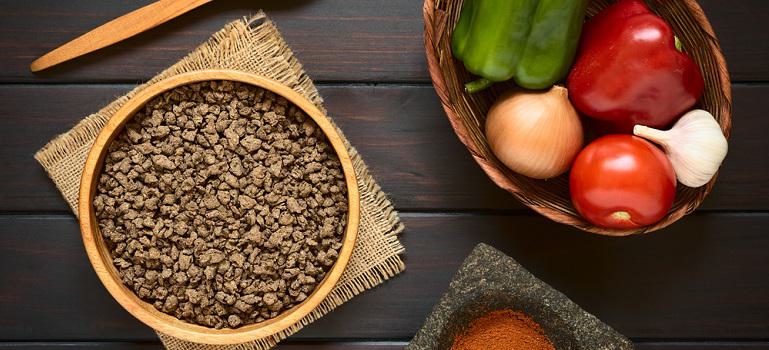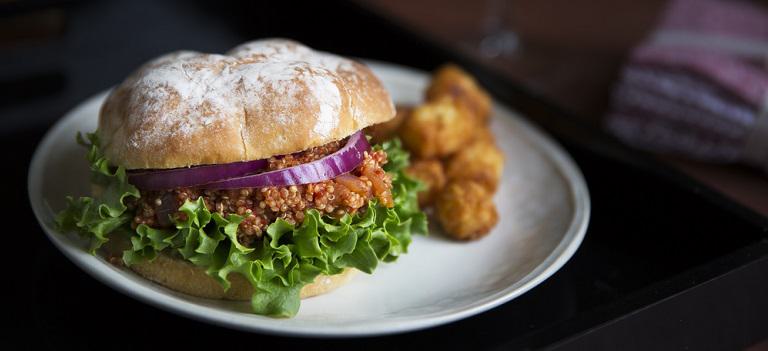


 Now, we mentioned that TVP is made from soy, but how is textured soy protein made? TVP is a food product produced by separating soy protein from the other elements found in soybeans. After separation, while the soy paste is still hot, it's compressed into various shapes such as flakes, chunks, nuggets and strips. Once it cools, the textured vegetable protein is dehydrated. To use it in recipes, it must be rehydrated before cooking.
Now, we mentioned that TVP is made from soy, but how is textured soy protein made? TVP is a food product produced by separating soy protein from the other elements found in soybeans. After separation, while the soy paste is still hot, it's compressed into various shapes such as flakes, chunks, nuggets and strips. Once it cools, the textured vegetable protein is dehydrated. To use it in recipes, it must be rehydrated before cooking.
 Aside from being a common ingredient in commercially produced vegetarian meat products, textured vegetable protein is also used as a meat extender in protein patties, meatloaf, stews and soups. Additionally, it can be worked into health bars, salads, cereals, baked potatoes and stuffing as a protein additive.
For a simple way to work textured vegetable protein into your meals, use it anywhere you would use ground beef or turkeyjust make sure you rehydrate it first.
Easy to prepare, TVP takes on the flavor of whatever recipe it's added to, making it an incredibly versatile addition to a wide variety of dishes and cuisine. Incorporating textured vegetable protein into your favorite recipes is a delicious and simple way to reap all of the benefits of soy.
Aside from being a common ingredient in commercially produced vegetarian meat products, textured vegetable protein is also used as a meat extender in protein patties, meatloaf, stews and soups. Additionally, it can be worked into health bars, salads, cereals, baked potatoes and stuffing as a protein additive.
For a simple way to work textured vegetable protein into your meals, use it anywhere you would use ground beef or turkeyjust make sure you rehydrate it first.
Easy to prepare, TVP takes on the flavor of whatever recipe it's added to, making it an incredibly versatile addition to a wide variety of dishes and cuisine. Incorporating textured vegetable protein into your favorite recipes is a delicious and simple way to reap all of the benefits of soy.
